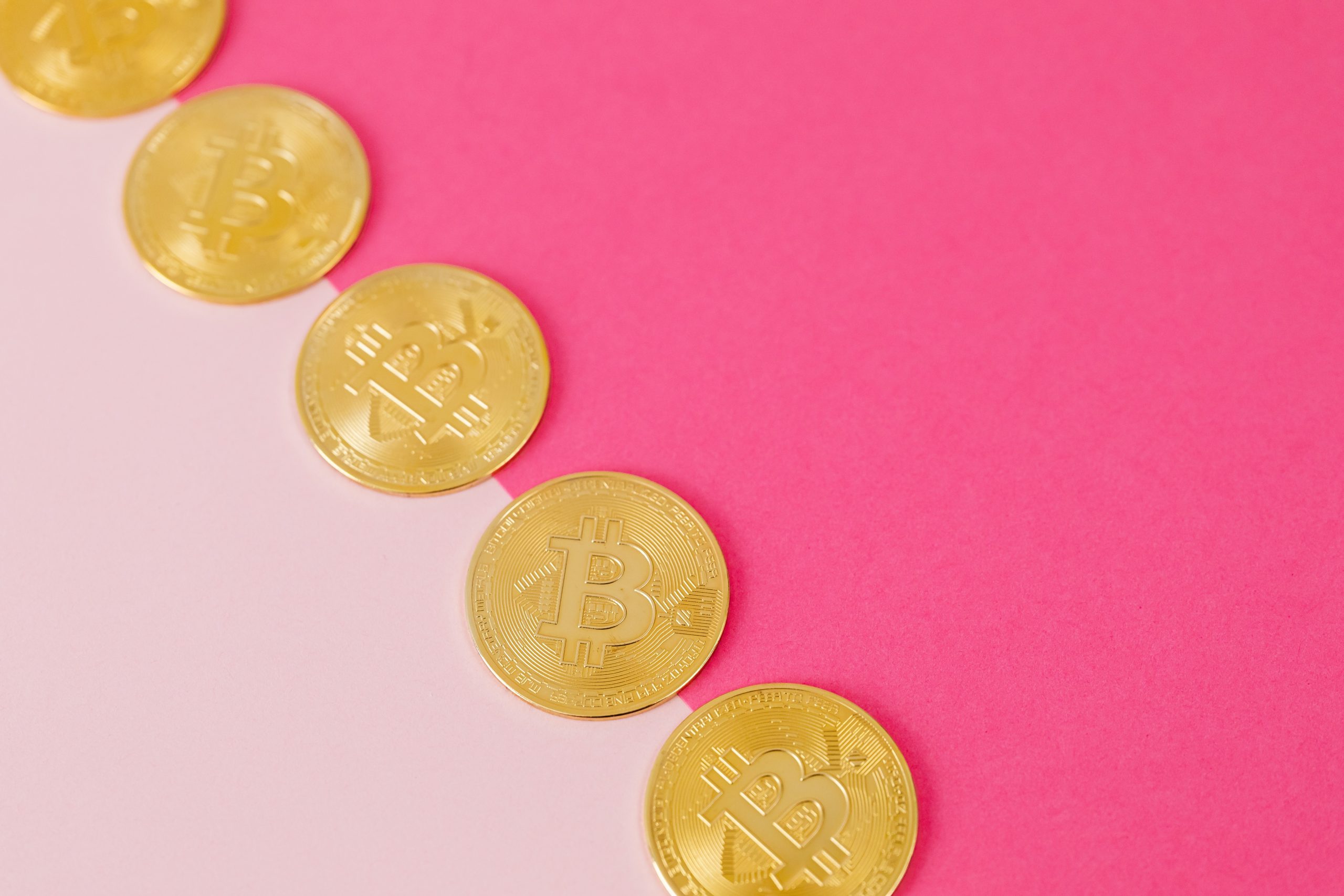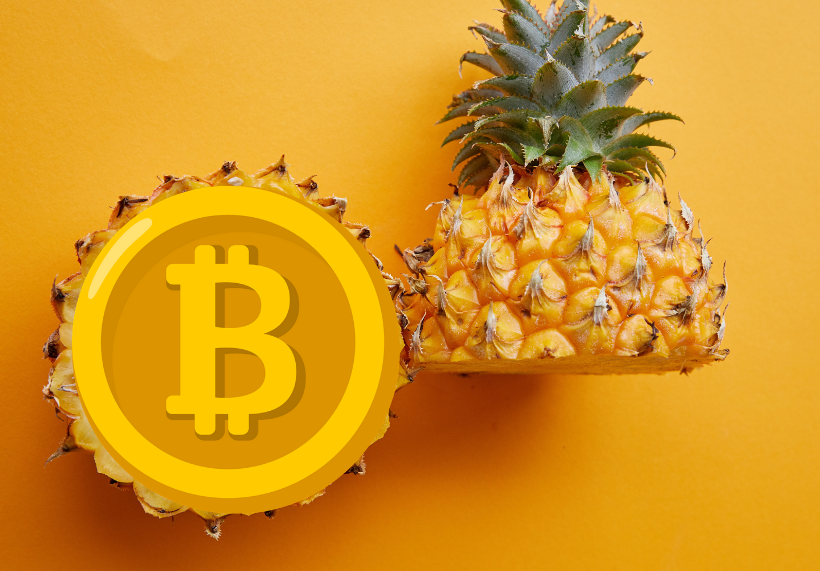Bitcoin halving occurs approximately every four years or after 210,000 blocks are mined. Also referred to as “the halvening,” this is a significant event for the world’s largest and most popular cryptocurrency.
What is the idea behind bitcoin halving? By reducing the reward for mining bitcoin, halving ensures that bitcoins in circulation do not increase drastically. The last bitcoin halving occurred in May 2020. To understand bitcoin halving, let’s first briefly introduce bitcoin.

What Is Bitcoin?
Bitcoin (also can be abbreviated to “BTC”) is the most popular and largest cryptocurrency in the world. It is a decentralized cryptocurrency using peer-to-peer technology to facilitate payments between people and even businesses. Bitcoin is also used as a method of payment and as a store of value.
In August 2008, bitcoin’s domain name “bitcoin.org” was registered. A few months later, a white paper titled “Bitcoin: A Peer-to-Peer Electronic Cash System” was published, and the network officially came into existence on January 3rd, 2009. Bitcoin’s first block or genesis block had a reward of 50 BTC.
Created by an anonymous person or a group of people going by the name “Satoshi Nakamoto,” bitcoin’s goal is to create a decentralized, peer-to-peer electronic cash system that is free from the influence of any central authority. Satoshi Nakamoto left bitcoin in 2010, leaving the cryptocurrency with a few prominent BTC community members.
What Is Bitcoin Halving?
Let’s understand what bitcoin halving is. As we know, it happens when 210,000 blocks are mined. A block can be defined as a file on the bitcoin network that stores 1MB of bitcoin transactions.
The blocks are mined by miners, who compete amongst themselves to add the blockchain’s next block. Miners are the users who process transactions on the blockchain and enforce the credibility of the network. Once a transaction is verified, miners add it to the blockchain. For confirming and verifying transactions, miners receive a reward. However, this reward is halved every 210,000 blocks mined.
In 2009, when the bitcoin network had just started, the reward was at 50 BTC. However, bitcoin is released at a decreasing rate as its supply approaches 21 million. The current reward for miners is at 6.25 BTC.
So, what is bitcoin halving? it is when the reward, or the creation of new bitcoins, is cut by half. The halving occurs approximately every four years or when 210,000 blocks are mined.
Bitcoin’s first halving event in 2012 slashed the reward for miners to 25 BTC. In 2016, the second halving event occurred, and the reward was further slashed to 12.5 BTC. Bitcoin’s latest halving event that occurred in 2020 further cut the reward to 6.25 BTC.

When Is the Next Halving?
Bitcoins are not easy to mine. According to Statista 2021 report, up until March 28, 2021, there are 18.67 million bitcoins in circulation, which is about 89% of total bitcoins issued. Around 900 bitcoins are mined every day, although that number could vary with the introduction of more powerful mining rigs.
As more bitcoin halving events occur, it is estimated that the last block will be mined around 2140, which is when miners will have mined all 21 million bitcoins. So how often do these events occur?
There’s no date for bitcoin halving to occur since it all depends on the number of blocks mined. The halving occurs once 210,000 blocks are mined since the last bitcoin. Generally, it takes around four years to mine 210,000 blocks.
Since each block takes around ten minutes to mine, at the current rate, the next bitcoin halving is expected to occur around 2024.

What Does Bitcoin Halving Mean?
It is the process of halving the rewards that bitcoin miners receive for verifying and adding blocks to the blockchain. Bitcoin halving happens after 210,000 blocks have been mined.
There have been three halving events in bitcoin’s history so far. The first occurred in 2012, with the reward for miners slashed to 25BTC. The second halving occurred sometime in 2016 and cut the reward to 12.5BTC. The most recent halving event occurred in May 2020, with the reward slashed to 6.25BTC.
How Does Bitcoin Halving Work?
Bitcoin’s total supply is capped at 21 million. Once the cryptocurrency hits this number, new bitcoins will cease to be created. But what are the reasons behind it? Why does it occur?
Bitcoin halving ensures that the number of bitcoins in circulation does not increase. Halving reduces miner rewards, making bitcoin more scarce. How does halving work? It occurs every 210,000 blocks mined or roughly every four years.
Halving does what the name suggests, and that is slashing the reward for miners in half. So the last bitcoin halving reduced miner rewards from 12.5 BTC to 6.25BTC. What happens after the last halving?
After the last halving event, block rewards will no longer be bitcoin. Instead, miners will be rewarded in transaction fees from users who use the bitcoin network for transactions. The rewards are a necessity to incentivize miners to continue verifying and processing transactions.
The bitcoin halving occurs because the blockchain’s underlying software dictates at what rate new bitcoins are created.

Why does Bitcoin halving occur and why is it important?
Bitcoin halving is hardwired into Bitcoin’s code. However, there has been no true explanation for why halving occurs and Satoshi Nakamoto himself has not left any clues as to the reasons behind the Bitcoin halving events.
One popular theory is that the Bitcoin network was designed to release coins more quickly during the time of its creation; this may have been a way to incentivize people to join the Bitcoin network as miners and contribute to the growth of the blockchain at the outset. This could also suggest that block rewards were designed to halve at specified intervals to increase the overall value as the network grew. Of course, it is also possible that halving was simply created as a way of ensuring the longevity of Bitcoin as a digital currency.
Like we mentioned before, the Bitcoin halving of May 2020 reduced the block reward for miners from 12.5BTC to 6.25BTC per block. While it might seem like this could, in theory, give miners fewer incentives to continue their proof of work, the reality is that the artificial scarcity implemented by Nakamoto only reinforces Bitcoin’s ability to act as a store of value. Even though the block reward is reduced through each successive halving, the transaction fees will always act to reward miners for their work on the blockchain. So, although Bitcoin’s concept (being mainly a digital currency) is comparatively simple to something like Ethereum’s smart contracts platform (we did a direct contrast between the two here), the limited supply solidifies Bitcoin’s value as an asset, which is what Nakamoto had originally envisioned when he created Bitcoin.
Because there can only be a finite amount of Bitcoin in existence, it carries the potential to be used alongside fiat currency as a valid form of payment. As Bitcoin is completely decentralized, its potential usefulness is compounded as, when combined with this scarcity, it could theoretically work as a failsafe against real-world price fluctuations and devaluations during economic crises.
Bitcoin halving: In conclusion…
In essence, the effects of Bitcoin halving work to secure Bitcoin’s longevity and usefulness. It ensures that, even long into the future, people would still be able to use and trade Bitcoin. While the block reward for mining will decrease with each successive halving event, this scarcity created will always make sure that miners are rewarded comparatively. Unless there are major advancements in mining technology, the next Bitcoin halving is speculated to occur in 2024. Who knows, maybe we’ll all be paying for our lunch with Satoshis in 2140!
Disclaimer: No Investment Advice The contents of this article are for informational purposes only and are not intended as, and shall not be understood or construed as, investment advice, financial advice or trading advice. There are substantial risks associated with the trading of cryptocurrencies and you should consult with a licensed financial advisor prior to making any trading or investment decisions. Content Not Warranted The contents of this article are provided “as is” and without warranties of any kind. You bear all risks associated with the use of the content provided including without limitation, any reliance on the accuracy, completeness or usefulness of any content available within this article. Risk Warning Cryptocurrency trading is subject to risks. Please read through our Terms of Service for full-risk disclosures.
Follow us on social!




